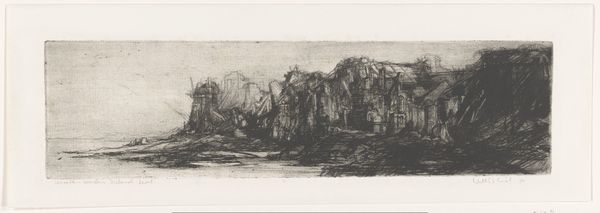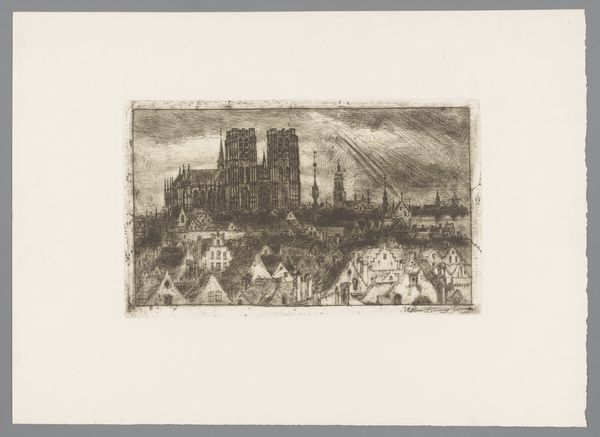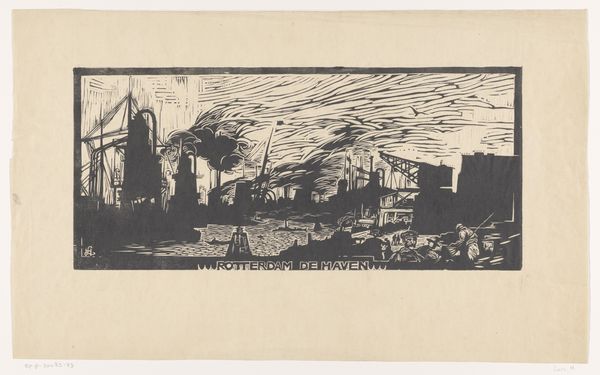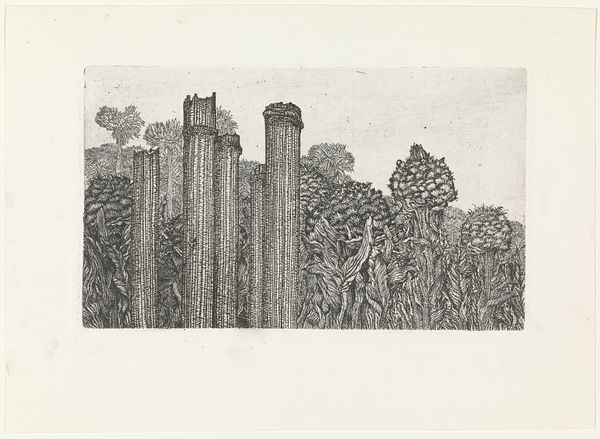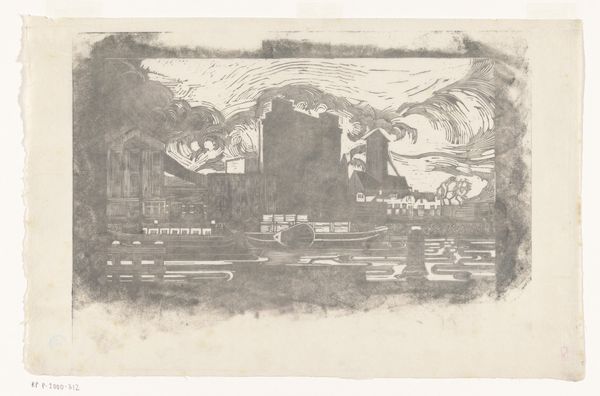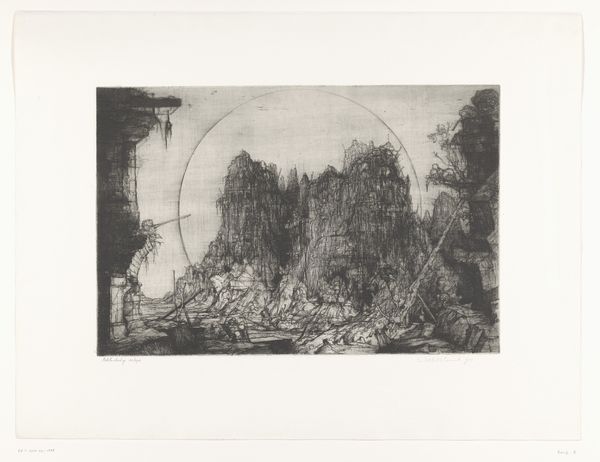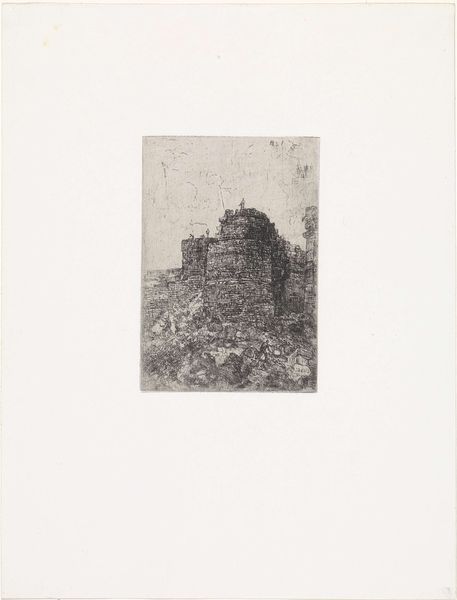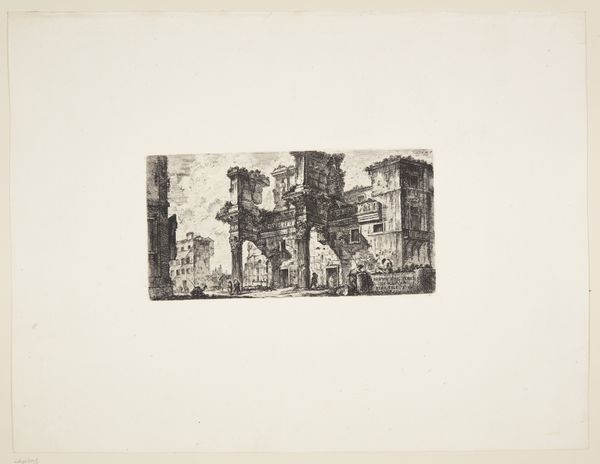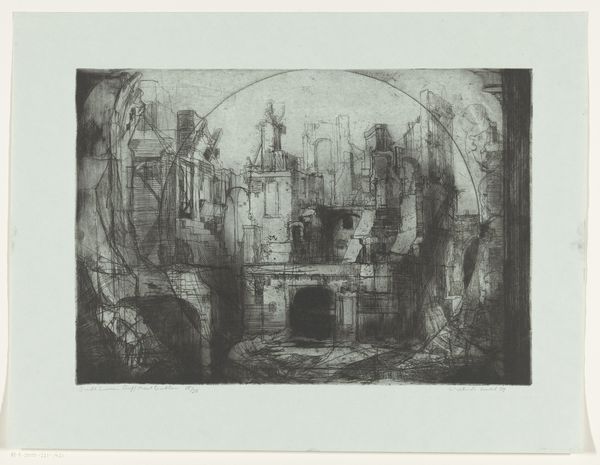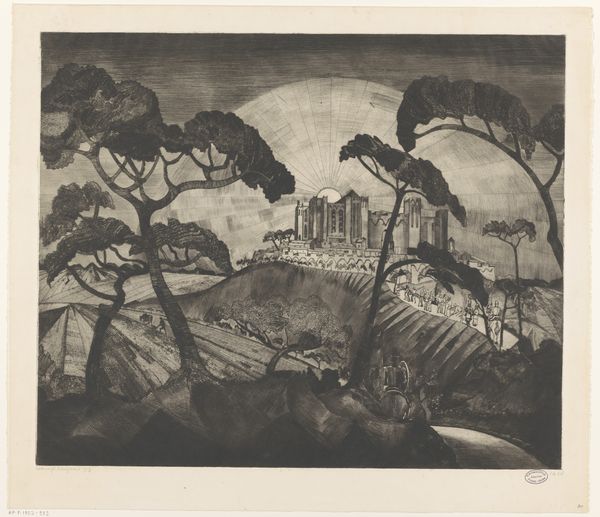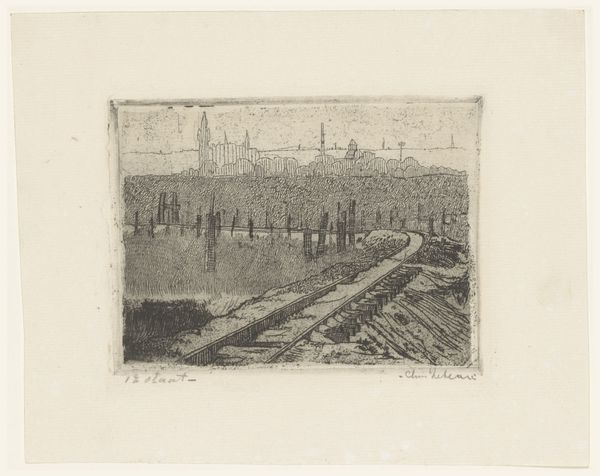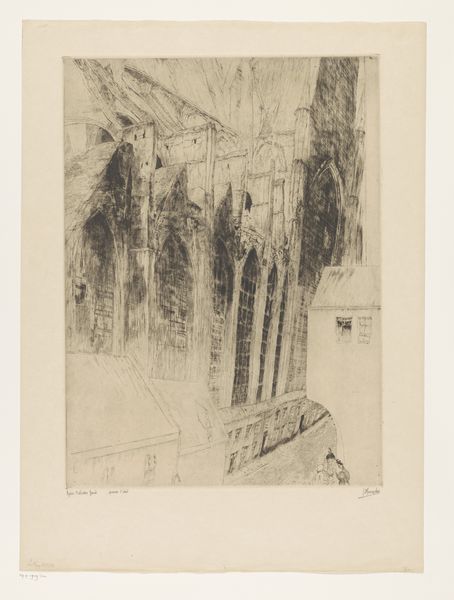
drawing, print, etching
#
drawing
# print
#
etching
#
linocut print
#
cityscape
#
monochrome
Dimensions: height 164 mm, width 373 mm, height 370 mm, width 477 mm
Copyright: Rijks Museum: Open Domain
Curator: Dirkje Kuik’s etching, "Kanaleneiland," believed to be from before 1964, presents us with an intriguing cityscape in monochrome. Editor: The immediate impression is stark; almost apocalyptic. The buildings are rendered with rough, jagged lines that create a sense of unease and decay. It is all very graphic and immediate, almost like something unearthed from the depths of war. Curator: Kuik, who spent time documenting post-war life in the Netherlands, particularly the reconstruction of Rotterdam, probably imbues Kanaleneiland with those impressions. It’s important to acknowledge how printmaking allows for the reproduction and wider distribution of such critical social commentaries. What was Kuik's intended reach by making prints? Did it have local impact on city plannning? The use of etching as a medium also speaks to specific technical traditions; it involves labor, materiality and consumption that are deeply linked with society at large. Editor: Yes, the medium certainly emphasizes the visual harshness, doesn't it? Look at the use of line and tone; the heavy blacks contrasting with the pale paper. It makes me think about how Kuik is using light and shadow not just to depict form but also to evoke a feeling of anxiety and even ruin, using formal visual tools for social message. Curator: Etching allows for an incredible amount of detail and texture. Each line is a deliberate mark made into the metal plate, translating to a reproducible image that can question or inform the masses of that moment. What we see may also be a political statement; she's showing urban degradation. Editor: True, but it's the formal balance – or imbalance, perhaps – that speaks so strongly. There's this strong horizontal sweep of the cityscape contrasted with the verticality of the buildings, and all the while that frenetic sky suggests even more. Curator: The choice of representing a "Kanaleneiland" as a theme could reflect post-war challenges but the cityscape extends further; the work stands to portray those themes but as it circulated amongst potential audiences. The materiality also becomes pertinent; what paper was used and by whom; also who may the distributors have been? The history in turn changes its purpose through modern-day analyses like we are currently making! Editor: Ultimately, “Kanaleneiland" becomes a poignant study in conveying mood and emotion through minimalist means. Whether Kuik wanted it to become part of larger conversation within post-war recovery or social criticism becomes difficult when approaching through that lens without clear historical context. But this is something felt deeply by those confronting war and post-war scenarios; using that monochromatic landscape can offer that intimate sense to some and even offer some distance to others when viewing art like that as a mirror for introspection!
Comments
No comments
Be the first to comment and join the conversation on the ultimate creative platform.
